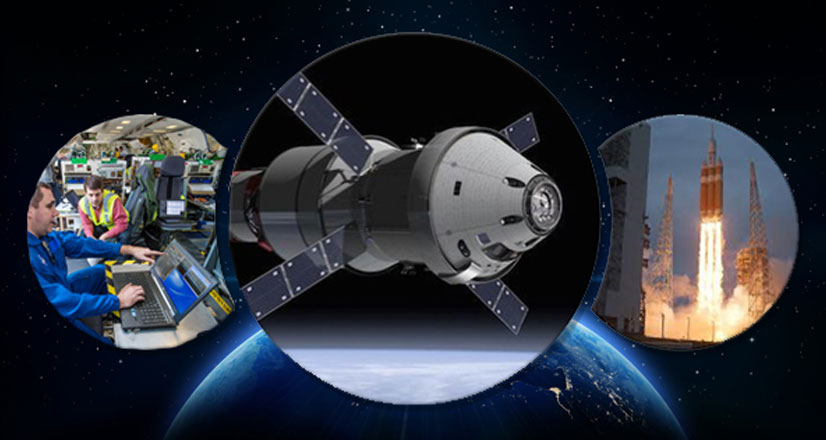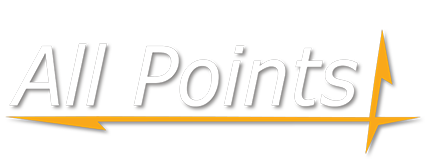
27 May The Autonomy of NASA’s Orion Spacecraft Shines Spotlight on Software, Modeling, and Simulation
Making a space mission operational requires testing designs with rigorous simulation that reveals potential mission issues and risks, as well as prepares the flight crew and flight controllers for the mission. For the first time since 1972, we are preparing to send humans to deep space, putting safety and momentum toward the future of human spaceflight on the line. We embrace the responsibility of preparing for these momentous missions, because we believe in human space exploration—and realize it’s not for everyone. Our work for NASA and the Artemis program has entailed a full-life-cycle journey through software development and technical support to integration, testing, and simulation for NASA’s first Artemis mission and beyond. All Points teams are spread across the country supporting software development, spacecraft modeling and testing, and mission simulation for the Artemis Program. We are also supporting the development and testing of simulation software for Boeing’s Starliner CST-100 that will deliver crew to and from the International Space Station.
Testing and Simulation: This Time is Different
Artemis 1 will be an uncrewed rehearsal for future missions to the moon and beyond, but it will be a milestone in that an automated human-supporting spacecraft will travel farther than ever before. The fact that Orion—an essential part of NASA’s Artemis program—can do so much on its own, under the direction of the flight control team, means the testing and simulation priorities look a bit different than they did for Apollo.
The interaction between crew and ground control is paramount; more so than the flying prowess of the cockpit crew. Deep knowledge, focused attention and communication are key. While modern systems offer automation and intervention from the Mission Control Center, operational knowledge and error detection by crews and controllers are all the more relevant. As such, most training and simulations focus on how mission control monitors and responds to autonomous flight processes (especially if they go wrong) and acts in planned moments to correct Orion’s flight path.
Orion Multi-Purpose Crew Vehicle Testing and Simulation
Lockheed Martin has several test and simulation labs, including high-fidelity systems located at their Waterton facility near Denver, Colorado. One of these is the Integrated Test Lab (ITL), which is basically a copy of the spacecraft in a test environment. The detail matches the actual vehicle down to the length of the wire harnesses. We are involved in testing flight software as well as supporting the management of that facility. The ITL interfaces with other facilities, not the least of which is the Mission Control Center (MCC) in Houston. Software is everywhere, and our testing team has a direct line to our developers in Houston and Denver. The developers and testers are separate to prevent bias but have open communication for clarity and feedback.
We simulate everything: avionics, electrical power systems, life support, sounds, and sights—the windows themselves are display screens that accurately model out-the-window views. Simulations can run faster than real time to run scenarios rapidly in a test environment to expose errors. Accurate modeling is crucial to verify the system design and identify issues as early as possible. The Exploration Flight Test-I mission in 2014 gave good indications that our modeling for Artemis was on track.
So here, the Orion vehicle proves it can fulfill its purposes, but the mission itself is a broader operation. That’s where we deliver high-fidelity simulations to be used at the Johnson Space Center in their training systems and MCC, where coordinated testing and training occurs. . . and where we also have a diverse team.
Ground Control: MSOC
Working under the Mission Systems Operations Contract (MSOC), we are directly involved in developing the software used to train flight controllers and astronauts at Johnson Space Center in Houston, as well as coordinating training with the ground operations at Kennedy Space Center in Florida.
In June 2019, flight controllers from the MCC simulated major parts of the uncrewed Artemis 1 mission trajectory: they discovered the need for an outbound trajectory correction and six other trajectory corrections to ensure the Moon fly-by happens at a precise time and location. Simulations and training focus on planned key operations and numerous failure scenarios. Astronauts are already involved in working in simulators, evaluating and testing the human elements of system design and preliminary crew procedures.
Later this year, we will have the satisfaction of answering the following questions that involve our software, engineering, testing, and simulation processes:
Did the spacecraft do what we expected—have we been modeling it correctly?
How did it perform at the subsystem level?
Did guidance, navigation, and controls respond and perform as expected?
Making missions operable means taking on responsibility on both ends of the engineering process. Talent and vision are not enough; we rely on years of space systems logistics operations, launch processing, and mission operations, to keep continuity throughout the process. The payoff is an unending expansion of opportunities with each success, making our imprint on the future, and inspiring the next generation.

